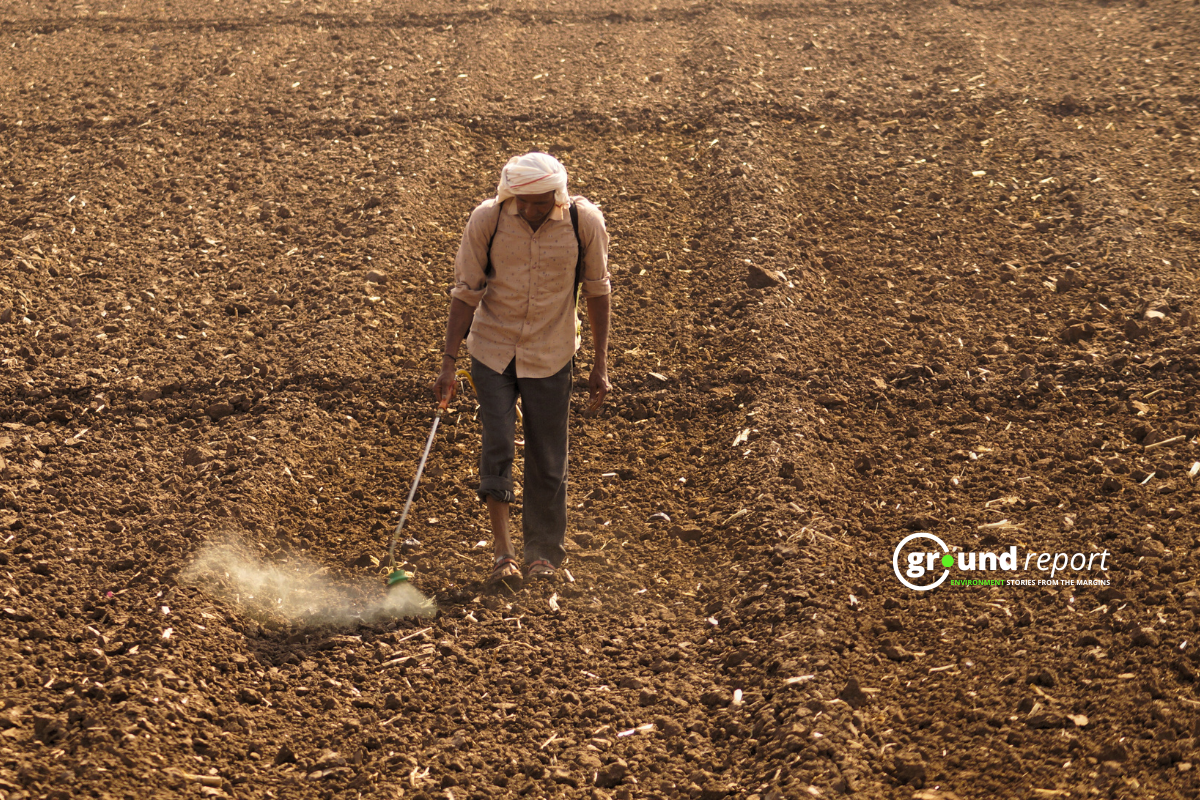Ayyankali was very hurt by this and he did not make friends with any golden caste in the future
Ground Report | New Delhi: Who was mahatma Ayyankali; Ayyankali is considered one of the first tide of social reformers from the then state of Travancore in British India, who paved the way for many radical changes in the region towards enhancing the social well-being of lower caste communities and improving access to education. In contrast to the miracle of human development that is talked about in the post-independence period in Kerala, seeing this picture of the underprivileged sections, even sensible people can deny that these are the things of erstwhile Kerala.
Who was Mahatma Ayyankali?
Ayyankaliwas born on 28 August 1863 in Venganur, a small village located 13 km north of Thiruvananthapuram district. Ayyankali was the eldest of eight children of father Ayyan and mother Mala. Her parents named her ‘Kali’, which merged with her father’s name to become Ayyankali. His caste was Pulayar (Pulaya). Before his arrival at Venganur, his family was from Palawan Tharawad.
Ayyan was respectfully saved by adding the name of his native village to his name. It was part of his identity. Pulayars are considered the lowest among the untouchable castes in South India. In the early twentieth century, their status was similar to that of a land slave. The zamindars, mainly the Nayars, used to employ any Pulayar of their own free will. After working from morning till evening, he got hardly 600 grams of rice. Sometimes that too useless
Humiliation by upper castes in childhood
Being an untouchable, Ayyankali had the right to play only with the children of his caste. At that time in Kerala, the people of the untouchable caste had to suffer a lot of humiliation, even if they passed through any path, they had to sweep that road again. Ayyankali One day while playing football, his ball fell into the house of an upper caste, the angry householder scolded and hit him and instructed him not to come near the castes. Ayyankali was very hurt by this and he did not make friends with any golden caste in the future. Since then, the feeling of giving respect to the people of Dalit castes arose in his mind.
The caste from which the youth comes, neither does he have the right to ride on a bullock cart. Not to wear clothes. Nor to walk on the paths on which his oxen are moving with the grace of elephants. Seeing his pride, the chest of his own people widens with pride. Some get jealous. The embers in the eyes of some begin to burst.
They block the way of bullock carts by taking out sticks, sticks, etc. from the houses. He expected what was happening. That’s why he has come prepared. It is better to retaliate than to suffer humiliation every day. Decide on this side or the other side. Seeing the trunk of the opponents, he takes out his khukri. Seeing his fierce form, those who block the way get frightened. Celebrating the victory, the bullock cart moves forward.
Freedom to market
There is no greater stigma in India than caste. It teaches to differentiate between man and man on the basis of birth. By saying ‘Dwij’, it puts immense authority in the hands of a handful of people. On the other hand, by branding a large section of the society as Shudras and untouchables, it snatches away their honor, respect, comforts, and even minor happiness from them. She was in an even worse state throughout South India including Kerala (Who was mahatma Ayyankali).
Therefore, during his visit to Kerala in 1892, Vivekananda even called it the ‘mad asylum of the castes’. In the twentieth century, the upper castes there also avoided the shadow of castes like Pulaya, Paraya, Kuruva. Atrocities against Dalits were common. They were neither free to walk on public roads nor to go to the market. Nor to wear nice clothes. He had a life like a slave. Our great hero, who snatched the freedom to walk on public roads on a bullock cart, rose once again with renewed vigor for his honor in 1898. This time the struggle was about the freedom to go to the market.
ALSO READ: PM Modi did not take need for oxygen seriously: Rahul Gandhi
These movements played a major role in making Kerala a modern state. There Ayyankalihas contributed as much as Jyotirao Phule and Dr. Ambedkar in Maharashtra, Periyar in Tamil Nadu. Ayyankali was born on 28 August 1863 in a village called Venganur in Travancore district, 13 km north of Thiruvananthapuram.
He was the eldest of eight siblings. The caste was Pulaya. The people of that caste generally worked like slaves. Ayyankali’s father Ayyan was also a slave of a landlord. Pleased with his hard work and loyalty, the zamindar gifted him five acres of land. Therefore, the status of Ayyankali’s family was very good among the people of his caste. Father Ayyan was the head of Pulaya Basti (Who was mahatma Ayyankali).
Between the anti-colonial struggle taking shape under the concept of a nation confined within the periphery of Varnashram and the current of a radical socio-cultural movement standing in the challenge of Varnashram, on the other hand, completely different from this entire movement, it was such a conflict that was going to emerge as a challenge again and again.
Ayyankali, through his organization, continued his struggle for the betterment of Dalits at various levels. Despite being illiterate himself, he opened schools from place to place, started agitations for temple entry, and also took steps to protect the interests of the workers. He was the first Dalit representative of the princely state of Travancore. Through his speeches, he also engaged a significant non-Dalit section with him.
A new wind blew across Kerala in the third tenth of the 20th century. Movements such as the 1924 Vaikom Satyagraha or the 1931 Guruvayur Satyagraha in a way expanded Ayyankali’s social rebellion. Ayyankali, who showed a new path to the oppressed Dalits of Kerala, died in the struggle in 1941 after a prolonged illness of asthma (Who was mahatma Ayyankali).
Pulayar Rebellion: Education Revolution
That struggle inspired the Dalits to raise their voice for other rights. Ayyankali himself was illiterate, but he did not want his future generations to be deprived of education. The government had opened the doors of education for all years ago. But the upper castes had the right over the school management. He used to deny the school admission of Pulayars and other Dalit children.
In 1904, Ayyankali started a movement for the education of Dalits. He opened the first school at Venganur in the same year for the education of Pulayars and other untouchables. It was the first school in Kerala, which was opened only for the study of Dalits. He was a ray of hope for the Dalits. But he could not tolerate the upper castes. They attacked the school and ransacked it. It was a big setback for Ayyankali. But the constant struggle had increased his life expectancy.
To institutionalize the struggle, Ayyankali formed an organization called ‘Sadhu Jana Paripalan Sangham’. His aim was to inspire Pulayar and other Dalits for education. The colonial government was also trying to spread education among the Dalits. At that time Michelle was the Director of the Travancore Education Department. Ayyankali, through his organization, wrote several letters to the Diwan and Director of Education of Travancore regarding education for the Dalits (Who was mahatma Ayyankali).
ALSO READ: FLOOD RISK MAY INCREASE UP TO 50 TIMES IN COASTAL AREAS: STUDY
Due to the policy of the colonial government, Diwan had signed the order in 1907 for the education of Dalits. But the issuance of the order was deliberately withheld. Michel came to know about Ayyankali’s frequent writings. He urged the Diwan to implement that order immediately. The order was finally issued in 1910, but the school managers, including the zamindars, refused to implement the order.
Ideal representative
Even as a public representative, Ayyankali used to fight for the rights of Pulayars and Dalits. The Pulayars did not have their own house, nor did they have cultivable land. The cultivators provided their services as laborers, like forced labour. The landlord could kick them out at any time. As a member of the ‘Shri Moolam Praja Sabha’, he also appreciated the socio-economic status of Pulayars, He raised the issue many times in meetings about their poverty and the plight caused by it.
Ayyankali was suffering from asthma since 1904. But without worrying about health, he constantly struggled for the welfare of his society, to get justice for it. For this, he traveled all over Travancore. Finally, on 24 May 1941, he completely took hold of the bed. And on June 18, 1941, that tireless justice warrior of death left the world (Who was mahatma Ayyankali).
Ayyankali was 45 years younger than Jotirao Phule, and 16 years older than Periyar. He did the same thing in Kerala as Phule did in Maharashtra and Periyar in Tamil Nadu. It is a different matter that Ayyankali’s contribution was neglected. If the women in modern Kerala are more literate and aware than the rest of the country, a lot of credit goes to Ayyankali.
You can connect with Ground Report on Facebook, Twitter, and Whatsapp, and mail us at GReport2018@gmail.com to send us your suggestions and writeups









